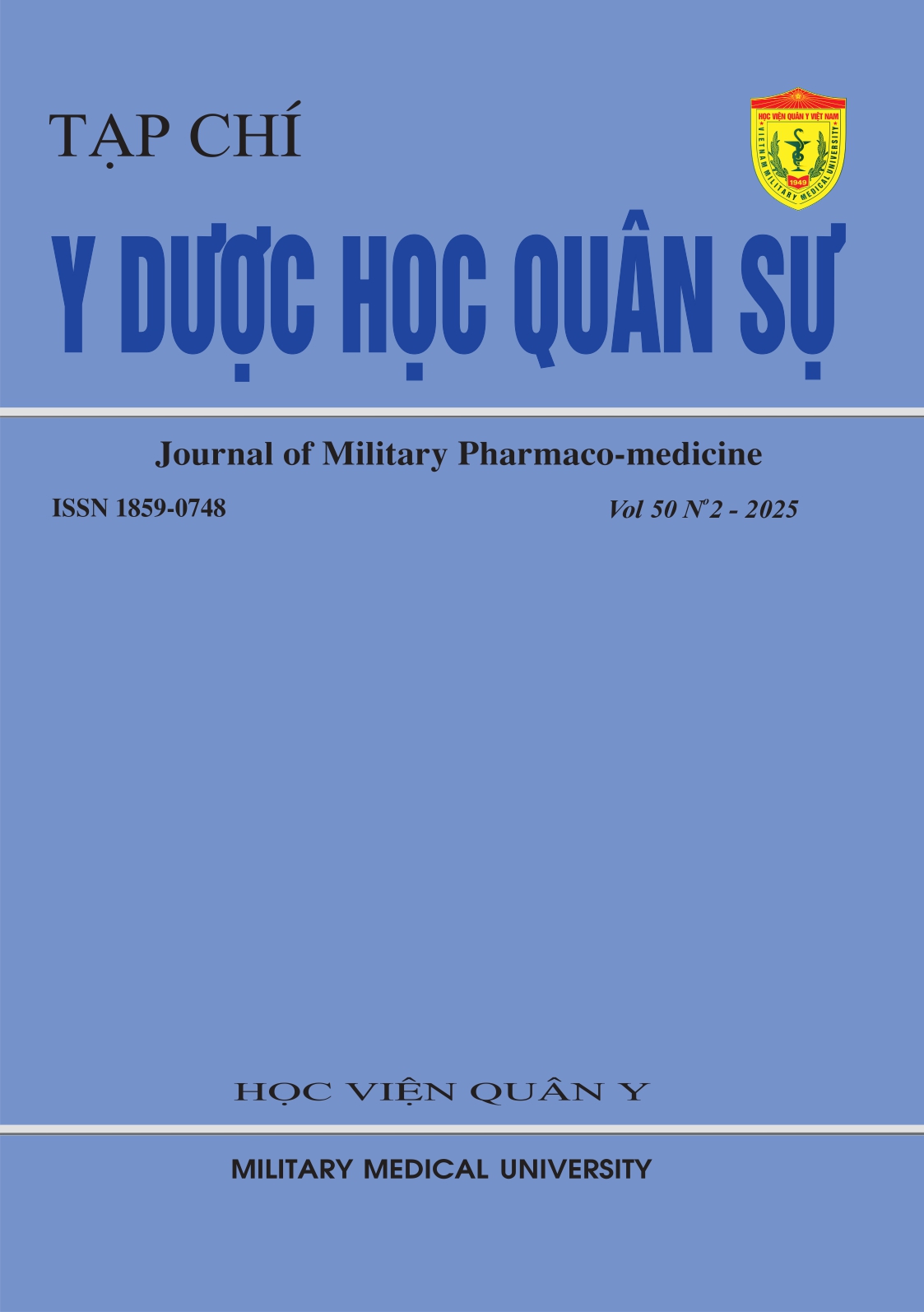EVALUATION OF THE RESULTS OF TYPE IV MIDDLE EAR ORTHOPEDIC SURGERY IN PATIENTS OF CHRONIC OTITIS MEDIA WITH CHOLESTEATOMA
Main Article Content
Abstract
Objective: To describe the clinical and paraclinical characteristics in patients with chronic otitis media with cholesteatoma; To evaluate the results of type IV middle ear surgery according to the modified Wullstein classification. Subjects and methods: To study a group of patients diagnosed with chronic otitis media with cholesteatoma who underwent type IV middle ear surgery according to the modified Wullstein classification from March 2017 to September 2024 at the National Otorhinorarynology Hospital of Vietnam. Results: The main functional symptoms were otorrhea and hearing loss (100%), tinnitus (70.0%) and ear pain (45.0%). The lesions on the CT scan were ossicular chain interruption (100%), epitympanic wall erosion (95.0%) and epitympanic ceiling dehiscence (15.0%). The average post-operative follow-up about 20 months showed that the PTA was 50.06±12.6 dB (There was no difference in audiological parameters before and after surgery) but the rate of mild hearing loss (PTA 26-40 dB) reaching 40.0%, moderate hearing loss (PTA 41-55) was 25.0%, moderate-severe hearing loss (PTA 56-70 dB) was 20.0% and severe hearing loss (71-90 dB) was only 15.0%; the average post-operative ABG was 31.4±12.6 dB. The rate of good surgical cavities was 85.0%, fungal infection was 15.0%, and there were no cholesteatoma recurrence cases. Conclusion: Type IV middle ear surgery according to the modified Wullstein classification contributes to preserving and improving hearing and creating stability of the radical mastoidectomy cavity.
Article Details
Keywords
Chronic otitis media with cholesteatoma, type IV middle ear surgery, Wullstein classification
References
2. Lailach S, Zahnert T, Lasurashvili N, Kemper M, Beleites T, Neudert M. Hearing outcome after sequential cholesteatoma surgery. Eur Arch Otorhinolaryngol. Aug 2016; 273(8): 2035-46. DOI:10.1007/s00405-015-3767-6.
3. Merkus P, Kemp P, Ziylan F, Yung M. Classifications of mastoid and middle ear surgery: A Scoping review. J Int Adv Otol. Aug 2018; 14(2):227-232. DOI:10.5152/iao.2018.5570.
4. Nguyễn Thu Hương. Nghiên cứu đặc điểm lâm sàng, cận lâm sàng và đánh giá kết quả phẫu thuật viêm tai giữa cholesteatoma tái phát. Luận án Tiến sĩ Y học trường Đại học Y Hà Nội. 2017.
5. Nguyễn Thị Miền HĐH, Phạm Minh Thông. Nhận xét đặc điểm hình ảnh trên chụp cắt lớp vi tính trong bệnh lý viêm tai giữa mạn tính. Journal of 108 - Clinical Medicine and Phamarcy 2020; 15(4).
6. Nguyễn Thị Tố Uyên. Đánh kết quả nội soi tiệt căn xương chũm đường xuyên ống tai ở bệnh nhân viêm tai giữa nguy hiểm. Luận án Tiến Sỹ trường học Đại học Y Hà Nội. 2018.
7. Shamaila Nawaz Khan, Iqbal Hussain Udaipurwala, Talat Mehmood and zahid mehmood rahat. hearing status after radical mastoidectomy without tympanoplasty. Journal of the College of Physicians and Surgeons Pakistan. 2017; 27(12):759-762.
8. Lương Hồng Châu. Đánh giá kết quả tạo hình hòm nhĩ nhỏ cho bệnh nhân đã mổ tiệt căn xương chũm tại Bệnh viện Tai Mũi Họng Trung ương. Journal of 108 - Clinical Medicine and Phamarcy. 2010; 5(3).


